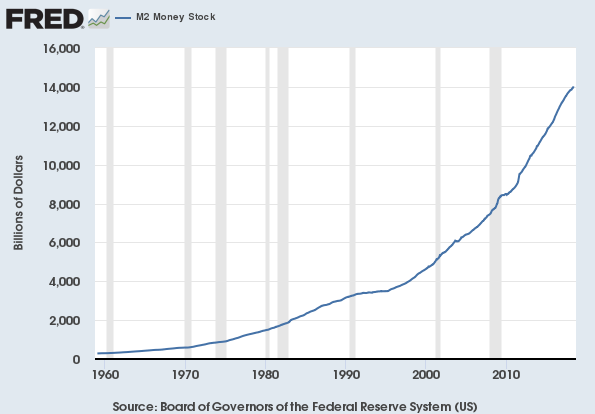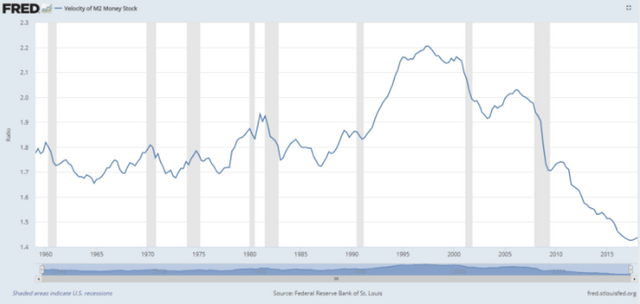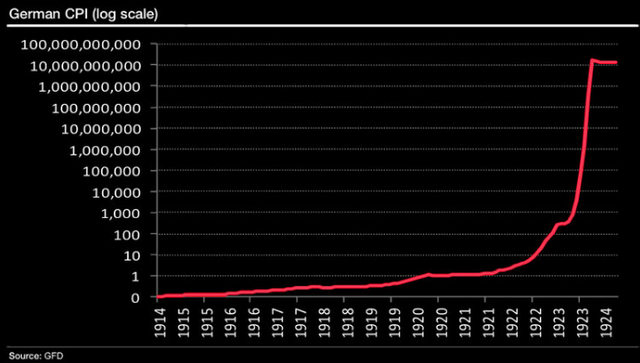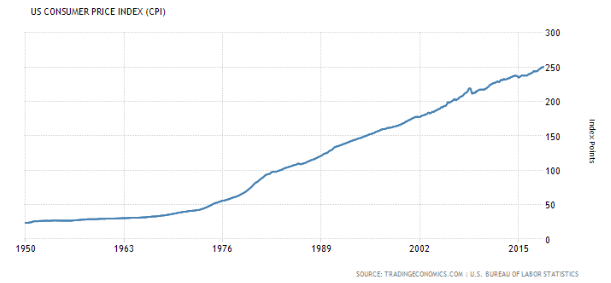Hyperinflation: History is Repetitive
This is written as a warning of what may be on the horizon. Too often it seems, small details with glaring consequences tend to be overlooked. In the case of fiat currency and its inherent inflationary nature, hyperinflation (otherwise known as Currency Crack-up) is a swift and deadly side effect. In this case, we shall examine the likes of the US Dollar and the signs that it is presently showing.
First, let us start by defining and describing the factors that cause hyperinflation. Hyperinflation is defined as “a macro-economic event that occurs as a result of a steep devaluation of a country’s currency that causes its citizens to lose confidence in it. When the currency is perceived as having little or no value, people begin to hoard commodities and goods that have value. As prices begin to rise, basic goods — such as food and fuel — become scarce, sending prices in an upward spiral. In response, the government is forced to print even more money to try to stabilize prices and provide liquidity, which only exacerbates the problem.”source
Essentially when hyperinflation begins to take hold, the total stock of money within a geographical area is oversaturated and diluted. This dilution then in turn weakens the units of what’s called their “purchasing power” otherwise known as “value”. Once value in any unit is weakened, prices of commodities will begin adjusting as the purchasing power decreases. In turn, prices for goods on the market increase as value in the fiat currency decreases.
The warning signs for hyperinflation are easy to spot once understood. The two factors we will focus on for this writing will be Money Stock and Money Velocity. Money Stock is simply an approximate measurement of the total units that are in the market. The measurement considers both physical states of the fiat process (recently printed and units currently in circulation). Money Velocity can be defined as “the rate at which money is exchanged from one transaction to another. It also refers to how much a unit of currency is used in a given period of time. Simply put, it's the rate at which people spend money.” source
Currency Crack-up is often caused by Money Stock and Money Velocity as they start to correlate with each other. As we see here, the supply or stock of money within the market has exponentially increased year over year for over 50 years.source
Knowing what we know, the printing press and arbitrary valuation of these currencies must be at an all time high right? Money Velocity must be so high that the Federal Reserve is forced to print this many units in order to keep up with demand and the speed at which these units move. As we see here, this is not the case at all.
source
The fact that Velocity is at an all time low (starting to trend higher) and the total Stock of money is at an all time high, puts us very close to the edge of oblivion. Similar to post WWI Weimar Germany, the countries central banks were tasked with printing units of currency in order to pay off debts owed to opposed warring countries by way of reparations within the Treaty of Versailles. Coupled with a war-torn country, lack of opportunity within the job market, and consumer confidence at an all time low, the velocity at which Germany's fiat currency moved also reached new lows. Individuals within the market held onto their cash balances in an attempt to safe guard from the uncertainties yet to come.
In time, the consumer confidence returned to the market and those who were saving started to instead spend their money they had saved by buying goods (increased Velocity). Coupled with the uptick in consumer spending, the Central Banks printing press did not decrease the rate at which it printed units. At the point at which it was realized, it was too late for any kind of recovery. In this scenario, the countries currency had been thrown into a state of hyperinflation through two different avenues of dilution, increased Money Stock (printing of currency=inflation) and an increase in Money Velocity (increased consumer spending=money moved from an idle state within cash balances to an active state moving through the market). Here is a graph of the impending result of those two factors clashing head on.
source
Comparing the charts of current US CPI [above], to the German CPI of the Weimar republic they look eerily similar. The characteristics of steady incline over the past 68 years does not bode well for the value of the US dollar and the overall state of the economy. As seen in the Weimar chart, currency crack-up can take hold at any second. All factors being similar, History has a way of always repeating itself.




interesting post, gd.
interesting post thank you.
How do you also see the 21 trillion dollars in debt the US gov currently has also contributing to the risk of hyperinflation? Is there a risk of default on US gov bonds?
If there was a default on US gov bonds surely this would be a catastrophic global event similar to the GFC.